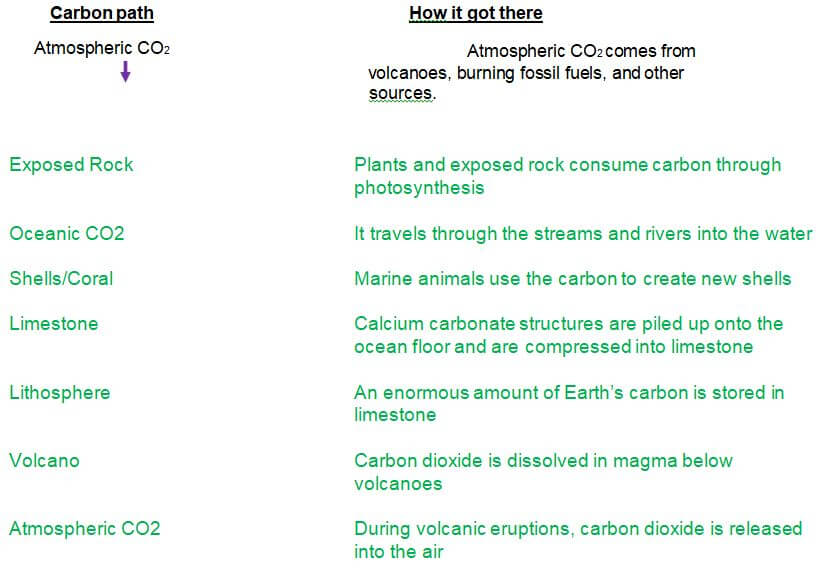

Scientists use the term “anthroposphere” to describe everything made or modified by humans. The biosphere consists of all living things, including people. The hydrosphere is composed of all of Earth’s water.

Introduction: Earth can be divided into four systems. How did the carbon atom get from land animals back to theĪtmosphere? Carbon dioxide is a byproduct of cellular respiration. How did the carbon atom get from land plants into the animal? Glucose and oxygen from carbon dioxide and water. How did the carbon atom get from theĪtmosphere to a plant? During photosynthesis plants use the suns energy to form

Click on Land plants and read the description.From Earth’s atmosphere, where can the carbon atom go.Represent possible locations the carbon atom could go next. To begin, notice the black carbon atom in the AtmosphericĬO 2 area, highlighted in yellow. Paths an atom of carbon can take through Earth’s systems. The Carbon Cycle Gizmo allows you to follow the many How do animals affect theĪmount of carbon in Earth’s atmosphere? Animals make carbon dioxide into the Animals eat plants and produce carbon dioxide and water.Plants decrease amount of carbon dioxide and make it into oxygen. How do plants on Earth affect the amount of carbon in Earth’s atmosphere?.

Using the energy of sunlight, plants build molecules of glucose In the process of photosynthesis, plants take in carbon dioxide (CO 2 ) from the atmosphere and Prior Knowledge Questions (Do these BEFORE using the Gizmo.) Geosphere, greenhouse gas, hydrosphere, lithosphere, photosynthesis Vocabulary: atmosphere, biomass, biosphere, carbon reservoir, carbon sink, fossil fuel, Burning fossil fuels in cars or power plants is another way this carbon can be released into the atmospheric reservoir quickly.Name: Date: Student Exploration: Carbon Cycle Processes such as erosion release this carbon back into the atmosphere very slowly, while volcanic activity can release it very quickly. When these organisms died, slow geologic processes trapped their carbon and transformed it into these natural resources. Rocks like limestone and fossil fuels like coal and oil are storage reservoirs that contain carbon from plants and animals that lived millions of years ago. Two-way carbon exchange can occur quickly between the ocean’s surface waters and the atmosphere, but carbon may be stored for centuries at the deepest ocean depths. The ocean plays a critical role in carbon storage, as it holds about 50 times more carbon than the atmosphere. Respiration, excretion, and decomposition release the carbon back into the atmosphere or soil, continuing the cycle. Animals that eat plants digest the sugar molecules to get energy for their bodies. They use energy from the sun to chemically combine carbon dioxide with hydrogen and oxygen from water to create sugar molecules. For example, in the food chain, plants move carbon from the atmosphere into the biosphere through photosynthesis. Conservation Service Corp Act Direct Hiring AuthorityĬarbon moves from one storage reservoir to another through a variety of mechanisms.Information for NOAA student opportunity alumni.About the education resource collections.NOAA Sea to Sky: Education resource database.NOAA in your backyard: Education contacts near you.


 0 kommentar(er)
0 kommentar(er)
